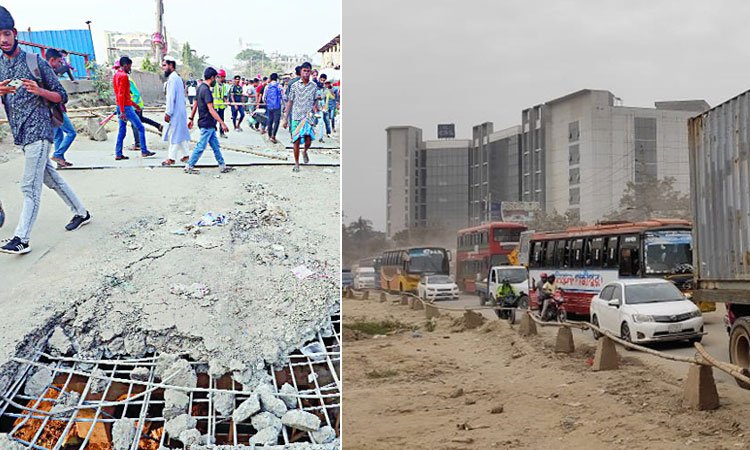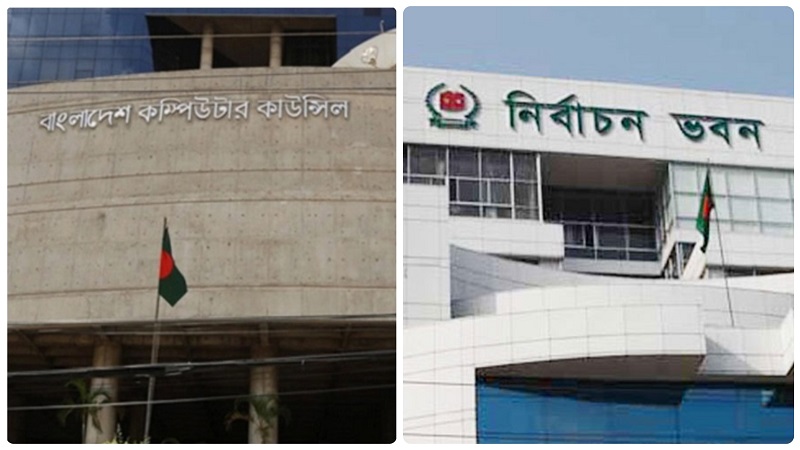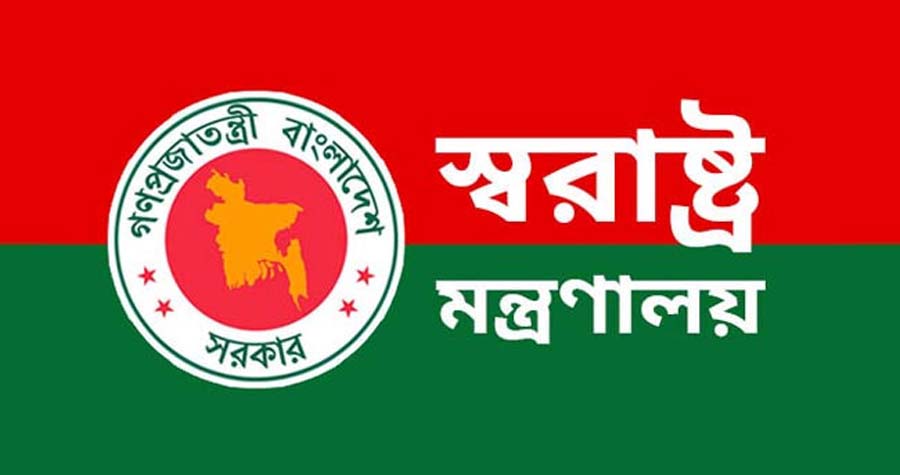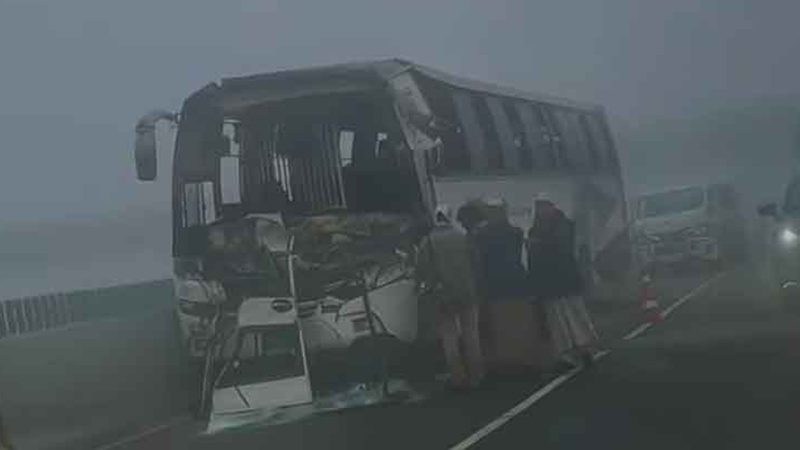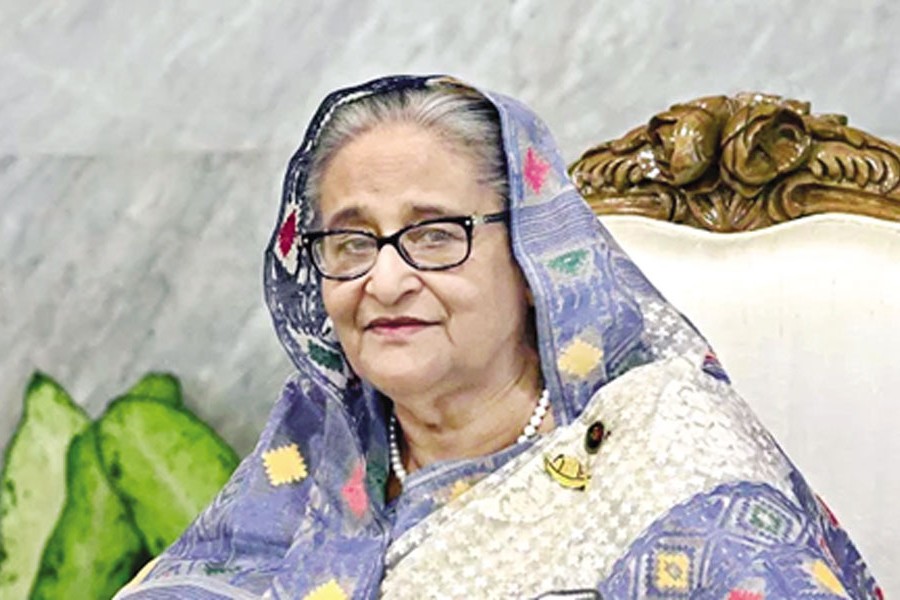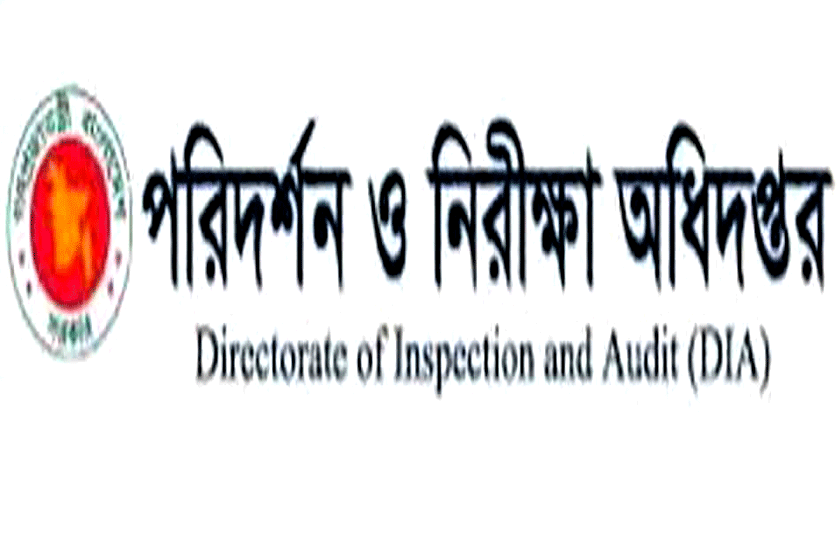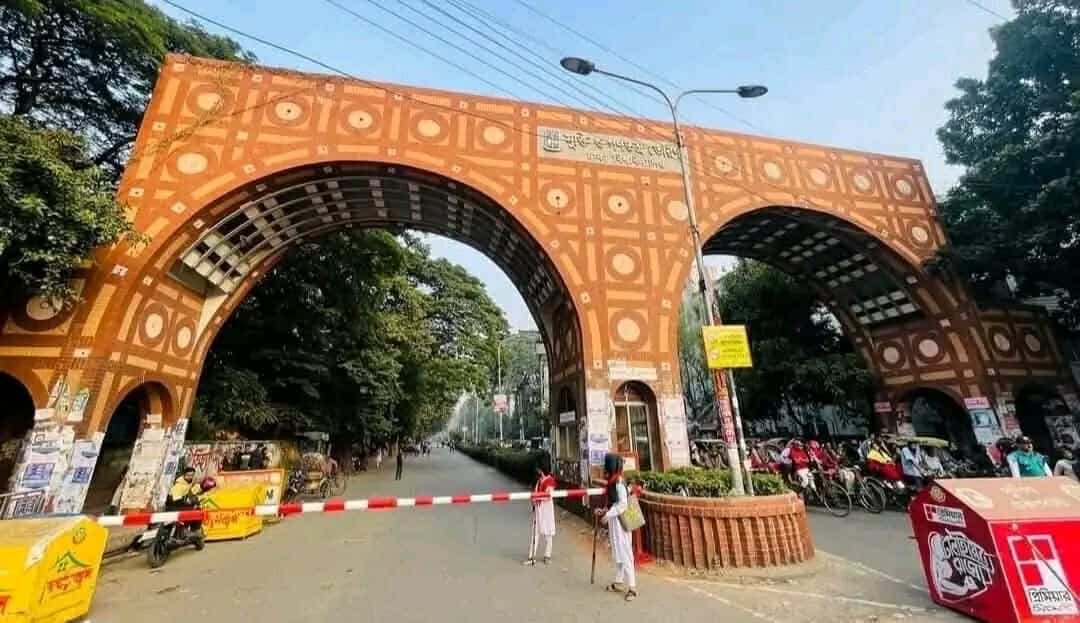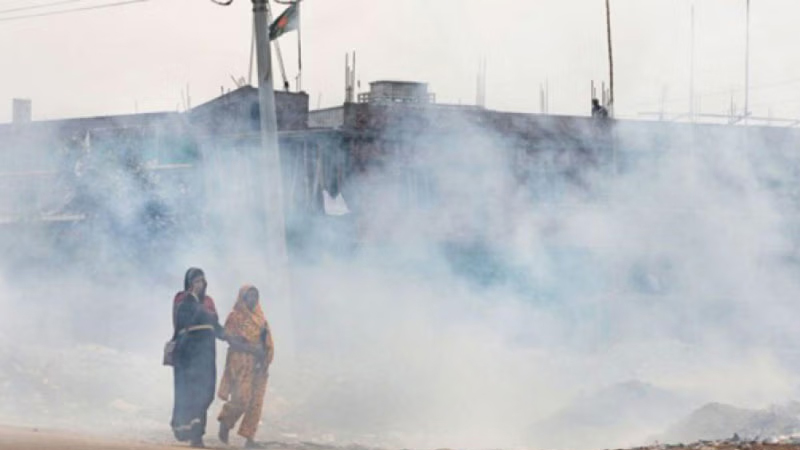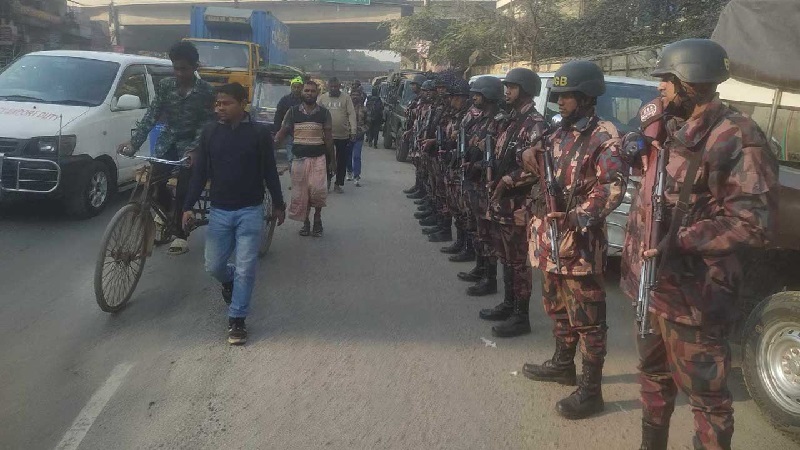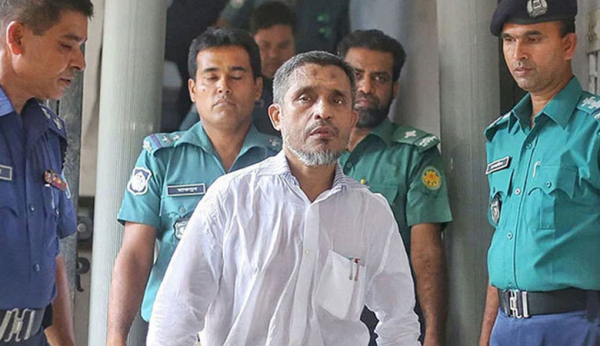Poor maintenance, design flaws, corruption blamed
Many recently-built bridges across the country have become unusable much before their lifespans ended.
Economists and experts have blamed negligence in maintaining the bridges, along with roads, for forcing the country to incur colossal losses with those requiring fresh investments.
Flawed designs, use of sub-standard construction materials and corruption have also been blamed for the sorry state of the road infrastructures while the country spends higher than many developed countries on building such infrastructures.
‘We build, we forget and we rebuild,’ said Bangladesh University of Engineering and Technology teacher Professor Shamsul Hoque on Wednesday.
For example, he said, the Meghna Bridge over the River Meghna was built with a Japanese grant of Yen 738.70 crore in 1991 with an estimated lifespan of 100 years for the bridge.
But the bridge built by Nippon Koe of Japan has already undergone extensive repairs — firstly in 2005 and secondly in 2012 — because of heavy damage in the expansion joints due to lack of appropriate maintenance, he added.
By 2019, the government retrofitted the Meghna Bridge and added a second track along with the old one with a fresh investment of Tk 1,750 crore.
A Roads and Highways Department official said that the manual on maintenance of the bridge provided by the Japanese construction firm in 1991 could not be produced by the department when the retrofitting of the bridge began in 2016.
A copy of the manual had to be collected from the archive of the construction firm in Japan for the work.
‘The incident shows the tendency of building new road transport infrastructures, but not maintaining them, and this tendency is common in Bangladesh,’ said Shamsul Hoque.
Benefits to some quarters within and outside the government, he continued, are much higher from new bridges and roads than maintenance of the existing ones.
The government has planned to set up a dedicated railway bridge along the Bangabandhu Bridge after the rail tracks, built on a side of the bridge, have proved to be risky for the infrastructure.
Due to the movement of trains, the Bangabandhu Bridge developed cracks and underwent repair in 2013, 15 years after it was opened for vehicular movement.
BUET civil engineering department head Professor Md Delwar Hossain noted that many transport infrastructures built recently could not cater to needs of the transport sector in a sustainable way while many bridges constructed 100 years ago are still in service.
The Hardinge Bridge, a 1.8-kilomtre steel railway truss bridge built in 1915 over the Padma River located at Ishwardi, is still strong, he observed.
Delwar Hossain noted that the country’s inadequacy to build viable roads and bridges in the recent past was exposed though it has the highest road density in South Asia.
There are 1,837.8 kilometres of roads in each thousand square kilometres of Bangladesh, considerably higher than Sri Lanka’s 1,505.3km and India’s 1,138km, according to the Asian Development Bank.
The number of new bridges and culverts for the extensive road network in the riverine country has also rapidly gone up in the post-independence period.
The number of bridges and culverts increased to 11,879 in 2000, 14,712 in 2005 and 18,258 in 2015 from 1,112 before independence, according to a RHD document.
Loans from multilateral lenders were taken at concessional rates to construct roads and bridges in the past, but now credit has to be procured from bilateral lenders at high interest rates for the purpose, said RHD officials.
But, experts said, faulty design and coordination gap among government agencies have turned many bridges and roads into an obstacle to the country’s economic progress.
The government in July decided to demolish the Shaheed Buddhijibi Bridge over the River Buriganga at Basila in Dhaka as it was causing problems to the movement of vessels on the river during the rainy season due to low height.
State minister for planning Shamsul Alam, who disclosed the government decision after a meeting of the executive committee of the National Economic Council, blamed the RHD for the flawed design of the 708-metre-long bridge built on the Dhaka–Mawa highway at Basila in 2008 at a cost of Tk 84 crore to connect Keraniganj and Nawabganj with Dhaka.
In February 2021, local government and rural development minister Md Tajul Islam — who leads an inter-ministerial master plan-executing committee for freeing the Karnaphuli, the Meghna and the Dhaka rivers from encroachment and pollution — said that the 13 bridges built with less than 25-foot height on the rivers around Dhaka would be rebuilt soon to ensure uninterrupted movement of vessels.
The bridges include Gabtali Bailey Bridge, Ashulia Bridge, Dhaur-2 Bridge, Pratyasa Bailey Bridge, Kamarpara Bridge and Tongi Road Bridge.
The ECNEC at a meeting in February approved a staggering hike in the cost of a Local Government and Rural Division bridge project by Tk 2,530.43 crore from the original Tk 3,926 crore.
The ECNEC meeting, chaired by prime minister Sheikh Hasina, found that the feasibility study in selecting the sites of the proposed 100 bridges was flawed.
Former caretaker government adviser Mirza Azizul Islam, who looked after both finance and planning ministries in 2007–08, expressed concern over the projects being undertaken without proper feasibility studies and scrutiny by the planning commission.
The economic loss due to such practice is tremendous, he said.
The World Bank in a 2017 report said that the cost of infrastructure building in Bangladesh was among the highest in the world while assessing various road infrastructure projects, including the Rangpur–Hatikumrul and Dhaka–Sylhet four-lane highways.
Bangladesh has been spending a substantial portion of the development budget every year on road-transport infrastructures without any major improvement in the country’s business competiveness, said Cantre for Policy Dialogue research director Khondaker Golam Moazzem.
Bangladesh’s international competitiveness in the infrastructure sector is ranked 111th among the 137 countries considered as per the Global Competitiveness Report 2017–18.
The CPD, which released the Global Competitiveness Report 2020 in December 2020, said that improvement of efficiency, perceived by respondents, in case of quality of road infrastructures dropped by 0.56 percentage point to 54.5 per cent in the country.
The level of improvement in terms of quality and efficiency is not to the tune of the level of investment due to over expenditure, faulty planning, unintended and intended delays, over-budgeting and corruption, said the report.


